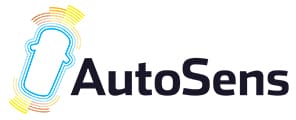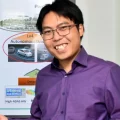08 - 10 October, 2024 | Palau de Congressos, Barcelona
AutoSens Europe 2023 Agenda
Please note: Session times and locations are subject to change
- 9:00am CET
- Wednesday 20th September
- Mezzanine Stage
AutoSens Interviews ChatGPT
- 9:15am CET
- Wednesday 20th September
- Mezzanine Stage
Future-Proof Connectivity for Imaging Sensors
- 9:45am CET
- Wednesday 20th September
- Mezzanine Stage
A General Camera Model: The EMVA 1288 Standard Release 4.0 and Lossless Image Compression
- 10:15am CET
- Wednesday 20th September
- Mezzanine Stage
Image Sensors for Safer Roads
- 11:00am CET
- Wednesday 20th September
- Classic Lounge
Press Briefing
- 11:30am CET
- Wednesday 20th September
- Mezzanine Stage
Computer Vision: What KPI for Camera performance evaluation?
- 11:30am CET
- Wednesday 20th September
- Minerva Room
Do Deep Neural Networks dream of Bayer data?
- 11:30am CET
- Wednesday 20th September
- Mahy Room
Redefining Radar – Camera Sensor Fusion: A Leap Towards Autonomous Driving Without LiDAR
- 11:55am CET
- Wednesday 20th September
- Mezzanine Stage
Performance Considerations for Automotive High Dynamic Range Image Sensors
- 11:55am CET
- Wednesday 20th September
- Minerva Room
From the road to the datacenter: fast and smart data recording to speed up ADAS/AD development
- 11:55am CET
- Wednesday 20th September
- Mahy Room
Context Adaptation for Automotive Sensor Fusion
- 12:20pm CET
- Wednesday 20th September
- Mezzanine Stage
Evaluating Geometric Distortion in Surround View Camera Systems: Implications for VRU Safety
- 12:20pm CET
- Wednesday 20th September
- Minerva Room
Advancing vehicle perception development using high-fidelity synthetic training data created using physically modelled sensors
- 12:20pm CET
- Wednesday 20th September
- Mahy Room
From ABS to Autonomous Driving
- 12:40pm CET
- Wednesday 20th September
- Mezzanine Stage
MEMS Actuator Application in Automotive Camera
- 12:40pm CET
- Wednesday 20th September
- Minerva Room
From Vision to Action: Elevating Safety with Super-Resolution Imaging Radars and AI-Enabled Perception
- 12:40pm CET
- Wednesday 20th September
- Mahy Room
Sensor Fusion, is this the next step for AI?
- 2:15pm CET
- Wednesday 20th September
- Mezzanine Stage
Analysis of weather effects on sensor performance for improving image quality
- 2:15pm CET
- Wednesday 20th September
- Minerva Room
Empowering the Future of Autonomous Driving: Scalable and Safety-Compliant Architectures
- 2:15pm CET
- Wednesday 20th September
- Mahy Room
Why Automotive Image Sensors Need to be Cyber-Secure
- 2:40pm CET
- Wednesday 20th September
- Mezzanine Stage
Assuring Autonomous Vehicles: Sensor Weather Degradation
National Physical Laboratory
- 2:40pm CET
- Wednesday 20th September
- Minerva Room
Automotive Radar Technology Innovations power next-gen ADAS and Autonomous Driving
- 2:40pm CET
- Wednesday 20th September
- Mahy Room
UNECE Regulations for Vehicle Cybersecurity – What’s required for OEMs and Tier-1s?
- 3:05pm CET
- Wednesday 20th September
- Mezzanine Stage
Functional validation of ADAS and AD systems: Why is it such a big problem? And how could we solve it?
- 3:05pm CET
- Wednesday 20th September
- Minerva Room
Automate The Last Stretch Of Daily Driving
- 3:05pm CET
- Wednesday 20th September
- Mahy Room
Discovering critical vulnerabilities at source with human code review
- 4:10pm CET
- Wednesday 20th September
- Mezzanine Stage
Lighting Up the Dark: Next-Gen Thermal Imaging Optics for Affordable Nighttime Pedestrian Detection in Cars
- 4:10pm CET
- Wednesday 20th September
- Minerva Room
Software-Defined Radar Sensors for Autonomy Customers
- 4:10pm CET
- Wednesday 20th September
- Mahy Room
Vehicle-to-Everything (V2X) in 2023: Progress, Challenges and Strategic Recommendations
- 4:30pm CET
- Wednesday 20th September
- Mezzanine Stage
Experiment assessment of thermal cameras in automatic emergency braking applications
- 4:30pm CET
- Wednesday 20th September
- Minerva Room
The Future of Vehicle Parking Innovations
- 4:30pm CET
- Wednesday 20th September
- Mahy Room
Observing the World: Defining a New Reference Observer for Non-Biological Entities

Prof. Alexander Braun,
Professor of Physics,
University of Applied Sciences Dusseldorf

Robert Dingess,
President,
Mercer Strategic Alliance

Patrick Denny,
Lecturer in Artificial Intelligence,
University of Limerick

Megan Lampinen,
Editor-at-large,
Automotive World
(Moderator)
- 4:50pm CET
- Wednesday 20th September
- Mezzanine Stage
Enhanced Pedestrian Safety with 3D Thermal Ranging using AI for ADAS/AV Applications
- 4:50pm CET
- Wednesday 20th September
- Minerva Room
Accelerating the ADAS development with ECO System
- 5:10pm CET
- Wednesday 20th September
- Mezzanine Stage
Thermal Imaging and PAEB Q&A Panel

Bendix De Meulemeester,
Director Marketing & Business Development,
Umicore

Sébastien Tinnes,
Global Market Leader,
Lynred

Chuck Gershman,
CEO, Co-Founder,
OWL AI
- 5:10pm CET
- Wednesday 20th September
- Minerva Room
Park Assist and Low Speed Maneuvering Q&A Panel

Dr. Ralph Mende,
CEO,
Smartmicro

Berveleen Mashonga,
Product Planning & Strategy,
Hyundai Mobis

Dong Chen,
General Manager German Site,
ZongMu Technology
- 9:00am CET
- Thursday 21st September
- Mezzanine Stage
New and Convenient Information Capacity and Related Measurements
- 9:00am CET
- Thursday 21st September
- Minerva Room
Catching the Long Tail of AI Perception: A New Strategy for Data Collection in AI Perception Development
- 9:00am CET
- Thursday 21st September
- Mahy Room
Novel method for testing Lidar sensor
- 9:25am CET
- Thursday 21st September
- Mezzanine Stage
JPEG XS video compression in automotive, a brief introduction
- 9:25am CET
- Thursday 21st September
- Minerva Room
Energy-aware Neural Architecture Search using accurate Virtual Prototypes of AI inference accelerators
- Thursday 21st September
- 9:25am CET
- Minerva Room
Energy-aware Neural Architecture Search using accurate Virtual Prototypes of AI inference accelerators
In this paper, we propose an extension to Neural Architecture Search (NAS) incorporating accurate inference energy prediction. An exemplary dedicated AI accelerator is emulated in a digital twin and power is measured for a dataset of different Neural Networks. These measurements can then be used for energy-aware NAS. In the presentation, the methodology and virtual platform will be presented, before the accuracy of the extended NAS is evaluated.
- 9:25am CET
- Thursday 21st September
- Mahy Room
How silicon-based SPAD sensors enable reliable and cost-optimized lidars today
- 9:50am CET
- Thursday 21st September
- Mezzanine Stage
Panel Discussion: How Should Image Quality in Computer Vision be Utilised for Safety Analysis?

Patrick Denny,
Associate Professor in Artificial Intelligence,
University of Limerick

Alexis Lluis Gomez,
Technical Director – Imaging,
ARM

Javier Salado,
Product Manager,
Anyverse

William O Grady,
Computer Vision Product Owner & Expert,
Valeo

Nirav Dharia,
Sensor Architect Lead,
Waymo
- 9:50am CET
- Thursday 21st September
- Minerva Room
Detecting the unsafe unknowns – What umbrellas, boxes and harvesters have in common
- Thursday 21st September
- 9:50am CET
- Minerva Room
Detecting the unsafe unknowns – What umbrellas, boxes and harvesters have in common
AI-based perception alone cannot ensure the safety of automated vehicles. The presentation discusses the safety aspects of typical perception and planning stacks. It proposes a complementary safety channel to address currently used algorithms’ weaknesses. This safety channel explicitly handles unsafe and unknown objects and ensures that the automated vehicle never collides with any of them.
Key takeaways:
• AI-based perception alone cannot ensure the safety of automated vehicles.
• Unknown objects need to be detected for safe automated driving.
• A safety channel with Dynamic Grid technology ensures collision-free driving.
- 9:50am CET
- Thursday 21st September
- Mahy Room
Advanced Sensor for LiDAR
- 10:10am CET
- Thursday 21st September
- Minerva Room
Artificial Intelligence and Machine Learning Q&A Panel

Florens Gressner,
CEO,
Neurocat

Nicolai Behmann,
Technical Solution, Architect,
Siemens EDA

Eric Richter,
Director – Technology Innovation,
BASELABS
- 10:10am CET
- Thursday 21st September
- Mahy Room
Introduction to Silicon Photonics and its applications to FMCW LiDAR sensing
- 11:15am CET
- Thursday 21st September
- Mezzanine Stage
Virtualization of optical qualification for windshield camera zones
- 11:15am CET
- Thursday 21st September
- Minerva Room
A Single-Chip, Low-Power Autonomous Driving Implementation
- 11:15pm CET
- Thursday 21st September
- Mahy Room
ADAS and AV Sensor Suite: Emerging Developments and Pricing Trends
- 11:40am CET
- Thursday 21st September
- Mezzanine Stage
Improving camera optics for windshields. Introducing novel interlayer and measurement technology
- 11:40am CET
- Thursday 21st September
- Minerva Room
Network-on-Chip Design for the Future of ADAS AI/ML Semiconductor Devices
- 11:40am CET
- Thursday 21st September
- Mahy Room
How developments related to automated driving are influencing the sensor and computing markets
- 12:05pm CET
- Thursday 21st September
- Mezzanine Stage
Windscreen Optical Quality
- 12:05pm CET
- Thursday 21st September
- Minerva Room
Panel Discussion: Zonal, Central, and Chiplet Trends – What are the Architecture Implications from a Vision and Sensing Perspective?

Asif Anwar,
Executive Director – Automotive,
TechInsights
(Moderator)

Frank Schirrmeister,
VP Solutions & Business Development,
Arteris

Chuck Gershman,
CEO,
OWL AI

Nirav Dharia,
Sensor Architect Lead,
Waymo
- 12:05pm CET
- Thursday 21st September
- Mahy Room
Technical semiconductor management in times of BANI (Brittle, Anxious, Nonlinear, Incomprehensible)
- 12:30pm CET
- Thursday 21st September
- Mezzanine Stage
Optimising Optics: Advancing Windshield Technology Q&A Panel

Stephane Baldo,
CTO,
SYNERGX

Alex Braun,
Professor of Physics,
University of Applied Sciences Dusseldorf

Uwe Keller,
OEM Business Development,
Kuraray

Olaf Thiele,
Product Manager,
LaVision
- 12:30am CET
- Thursday 21st September
- Mahy Room
The road to autonomous cars: technology, ecosystem, and market review
- 2:10pm CET
- Thursday 21st September
- Mezzanine Stage
The Safety Performance of the Waymo Driver
- 2:40pm CET
- Thursday 21st September
- Mezzanine Stage
Could the Chiplet Save Moore’s Law?

Junko Yoshida,
Editor-in-Chief,
The Ojo-Yoshida Report
(Moderator)

Bart Placklé,
Vice President Automotive,
imec

Edo Cohen,
VP Automotive Product,
Valens Semiconductor

Simon Verghese,
Director Sensor Systems,
Waymo LLC






















































